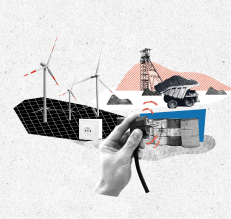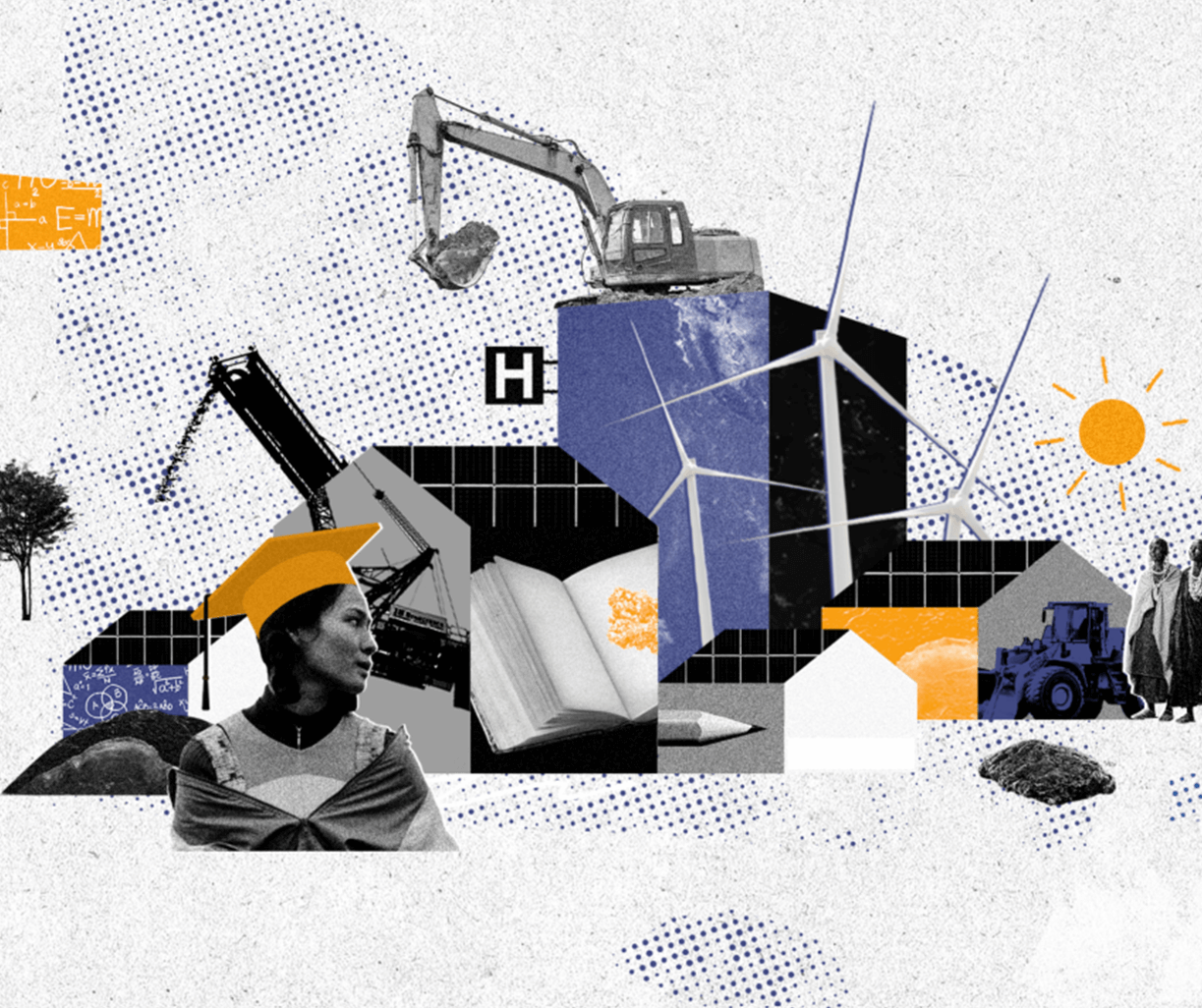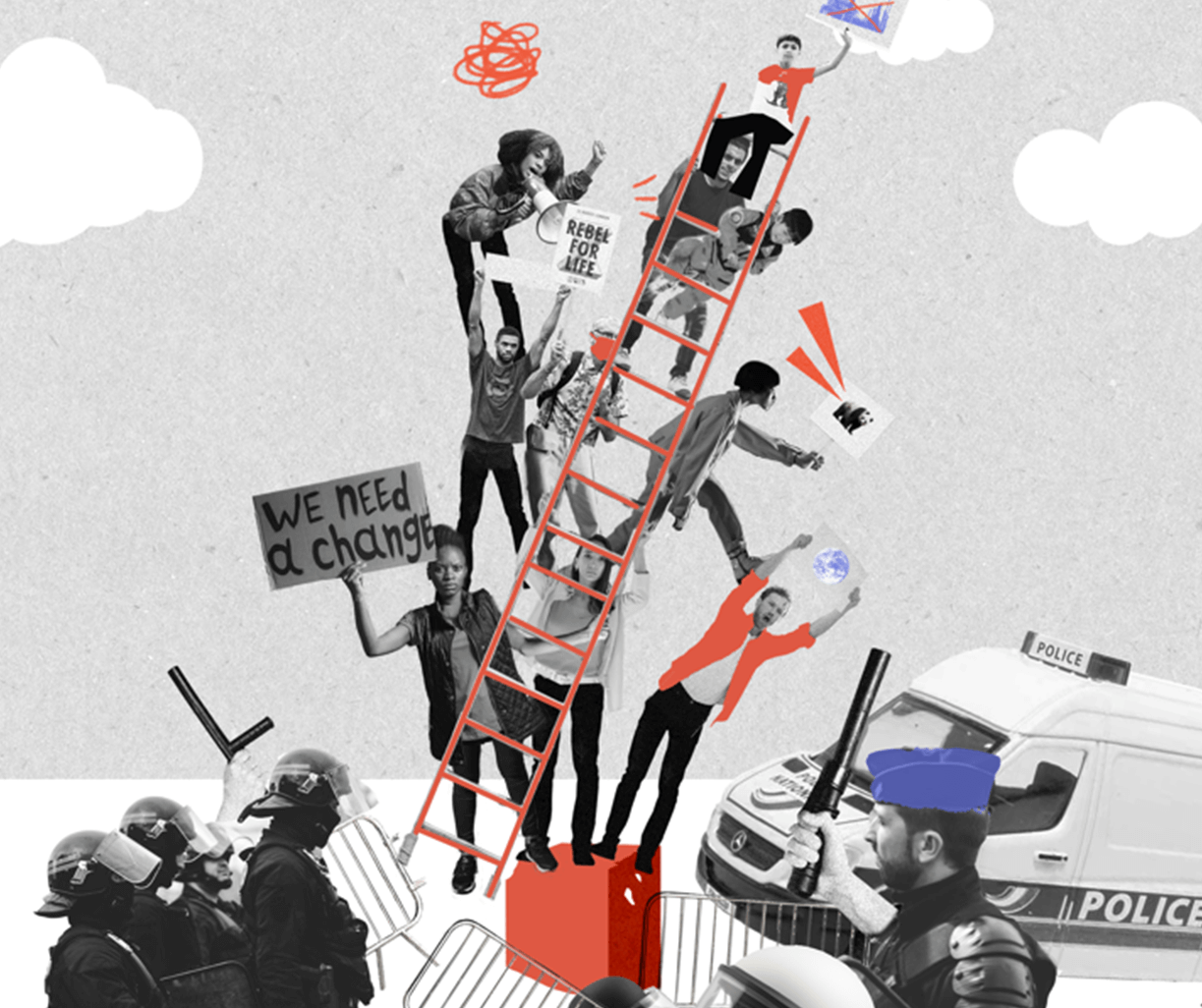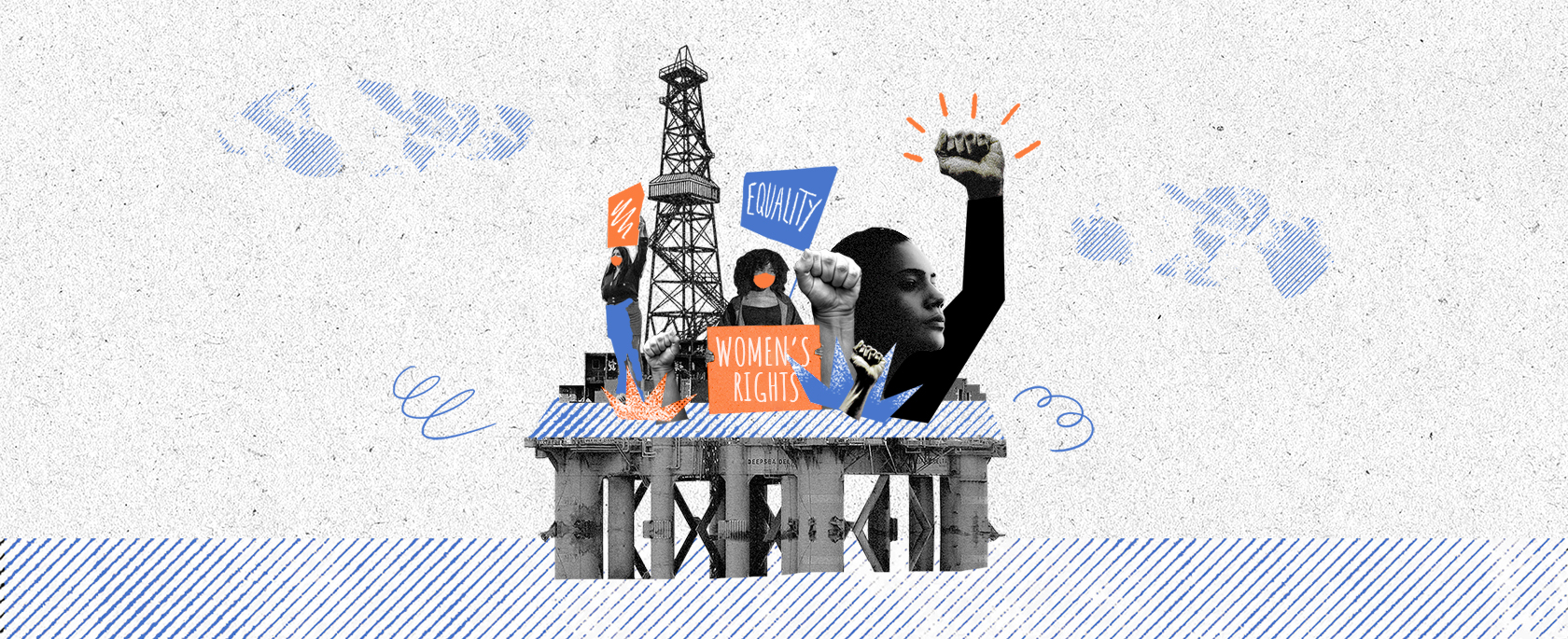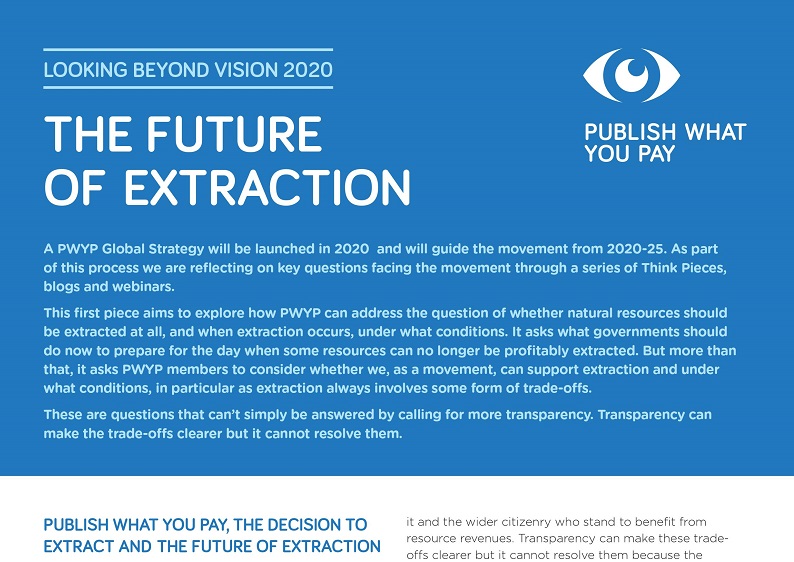Publish What You Pay is working on a Global Strategy which will serve to guide the movement from 2020-25. As part of this process we are reflecting on key questions facing the movement, starting with this Think Piece and a webinar that will raise some key questions from the piece. Find out more about the PWYP Global Strategy process by watching this explanatory video.
This first piece aims to explore how PWYP can address the question of whether natural resources should be extracted at all, and when extraction occurs, under what conditions. It asks what governments should do now to prepare for the day when some resources can no longer be profitably extracted. But more than that, it asks PWYP members to consider whether we, as a movement, can support extraction and under what conditions, in particular as extraction always involves some form of trade-offs. These are questions that can’t simply be answered by calling for more transparency. Transparency can make the trade-offs clearer but it cannot resolve them.
PWYP will be hosting a webinar on this topic on Monday 26 March at 10am BST. Click here for more information on how to participate.
—-
The future of extraction
By Diarmid O’Sullivan
Publish What You Pay’s (PWYP) transparency agenda, including the Chain for Change, does not adequately address two questions which will be increasingly important in the era of climate change, resource depletion and growing pressures on land, water and other non-extractive resources.
The first question is whether a hydrocarbon or mineral deposit should be extracted at all. The second question is what governments should do now to prepare for the day when some resources can no longer be profitably extracted; either because deposits have been exhausted or because demand for oil, gas and coal has been sharply reduced by global action against climate change.
These two questions go to the heart of PWYP’s mission but they cannot simply be answered by calling for more transparency. PWYP needs to adopt positions of principle on both questions and then decide what kinds of transparency will be needed to support these positions.
The “decision to extract”
The benefits of extraction are often less than people expect, yet the costs can be high. Nigeria is one of Africa’s largest oil producers but only earned about US$200 per Nigerian from oil in 2014, far from enough by itself to lift the country out of poverty. Yet oil extraction has caused gross pollution, violent conflict and human rights abuses in the Niger Delta. Many countries have similar stories.
Extraction commonly involves trade-offs, for instance between affected communities who may suffer from it and the wider citizenry who stand to benefit from resource revenues. Transparency can make these trade-offs clearer but it cannot resolve them because the problem is one of principles and priorities, not just of information. For example, an oil company or a finance ministry is likely to place a higher value on an oil deposit underneath a forest than on protecting that forest, whereas indigenous people or climate scientists are more likely to take the opposite view.
Most of the links in the Chain for Change implicitly assume that extraction will go ahead, or has gone ahead already. There is a link in the Chain on the “decision to extract” but it calls for the decision to be addressed by informing local communities through impact assessments. However, impact assessments are an unsatisfactory response to the dilemmas posed by the decision to extract.
Once a deposit is known to be commercially viable, there will be economic and political pressures favouring extraction which may have grown so powerful by the time local communities are consulted that they are hard to resist. Even if the assessment is transparent, it will still be difficult to compare costs and benefits because these will fall on different parts of society and much of the key information, such as the long-term value of the resource or the effect of a mine on local communities over many years, cannot be known accurately in advance.
All too often, the default position of governments is for extraction to go ahead. If PWYP does not want to go along with this default position, then it cannot rely on impact assessments but must decide in principle what kinds of extraction should be acceptable, under what conditions (see Conclusion for details of how this might be done).
The future of extraction and climate change
Oil, gas and minerals are finite resources which must one day run out. In the case of hydrocarbons, even if they do not run out, their value may sharply decline in the coming decades if global action against climate change succeeds in curbing global demand for fossil fuels, which it needs to do if the most catastrophic effects of climate change are to be avoided.
So governments – particularly those in countries with relatively small or declining deposits – need a clear and realistic strategy which sets out how resources should be managed now, so as to prepare for a future when the resources have been used up or can no longer be profitably exploited.
Getting a strategy right, and putting it into practice, is a highly complex task. For example, a country which wants to shift from dependence on mining to higher value-added manufacturing will need an education system which can provide citizens with the necessary skills. This may mean investing revenue for many years in deep reform of institutions, policies and public attitudes.
Governments commonly do have such strategies, for instance in the form of national development plans or implementation plans for the UN’s Sustainable Development Goals. But their actions in practice may not be consistent with these aims: for example, when a government pledging to protect the environment for future generations is also licensing new large-scale mining, or when scarce public funds are used to give pay rises to civil servants ahead of an election.
More transparency can make clearer to citizens what resources are available to prepare for that future but it cannot answer questions about which resources should be extracted, under what conditions, and how the revenues should be used. Nor can campaigning against corruption: corruption is a major obstacle to sustainable development, because it wastes vital funds and reinforces short-termism in government policy, but the problem of how resource-dependent countries should prepare for the future would still be very complex even if there were no corruption.
So PWYP will need its own ideas about how governments should manage natural resources now in order to prepare for the future. The current vision and mission, which say only that extraction should contribute to prosperity and better lives for all, is too vague to address the specific challenges that governments and societies must face in preparing for what comes after extraction.
Conclusion: Beyond the Chain for Change
PWYP needs to go beyond the Chain for Change and ask itself two questions in principle. The first is:
Should all the oil, gas and minerals in a country be extracted? If not, then what criteria should be used to decide whether or not an extractive project should go ahead?
PWYP is a diverse global movement, so there may not be agreement between all members about what these criteria for extraction should be. However, PWYP could adopt a two-level position.
The first level would be a common global position, supported and campaigned on by all PWYP members. This position would be based on international laws and norms: for example, PWYP could take the view that an extractive project should only be approved if it has been verified that the project has obtained the Free Prior Informed Consent (FPIC) of affected communities, and that the project will not undermine the country’s international commitments to curb climate change.
Each national PWYP coalition could then adopt a more detailed second-level position, in line with conditions in its own country. For example, a national position could be that:
- extraction should not be allowed in sensitive areas like protected forests or watersheds, or;
- new extraction of certain highly-polluting resources (such as coal) or which relies on highly polluting techniques (such as submarine tailings disposal) should not be allowed, or;
- exploitation of new deposits should not be permitted until the government has shown that it can maximise the long-term value to society from existing projects;
These two levels could be linked together and given a PWYP character by a shared emphasis on the right of citizens to be informed about policy options, to exercise a voice in decision-making and to hold governments to account for the outcomes, via transparency and public debate. If political conditions in some countries do not allow for a more detailed national position on these issues, then the national coalitions in those countries could simply support the international position.
The second question to be answered is:
What should governments be doing to prepare for the day when hydrocarbon or mineral deposits are exhausted, or can no longer be profitably exploited?
Again, all national coalitions should decide an answer to this question but the answer does not have to be the same for each PWYP country. Some coalitions might want to campaign for a transparent savings fund like that of Timor Leste. Others might press for more resource revenues to be invested in health, education and other public goods which are known to be essential for long-term development. An alternative would simply be to call for regular public reports from the government on the depletion of resource deposits, so that the public is aware how much is left.
Once these two questions have been answered, then it is possible to ask a third: What further information needs to be disclosed by governments and companies, so that concerned citizens can hold them to account on Questions 1 and 2?
As noted above, just providing more information will not resolve the dilemmas of the decision to extract or answer questions about how the extractive sector and its revenues should contribute to a post-extraction future. But once PWYP has a principled position on these issues, then it will be easier to see what kinds of transparency will be needed. For example, what kinds of verification will be needed to confirm that a community has genuinely given its free, prior and informed consent to a project? Should governments be required to report to the public on their long-term plans for transitioning away from dependence on natural resources?
It will be easier for PWYP to justify coming back to governments and industry to demand yet more types of disclosure, year after year, if this demand is tied to a positive vision of the future which is concrete enough that progress towards it can be measured. PWYP needs a clearer position on what the extractive sector is meant to contribute to society, now and in the future. Taking positions on the decision to extract, and on the future of extraction, would allow the coalition to do so.
